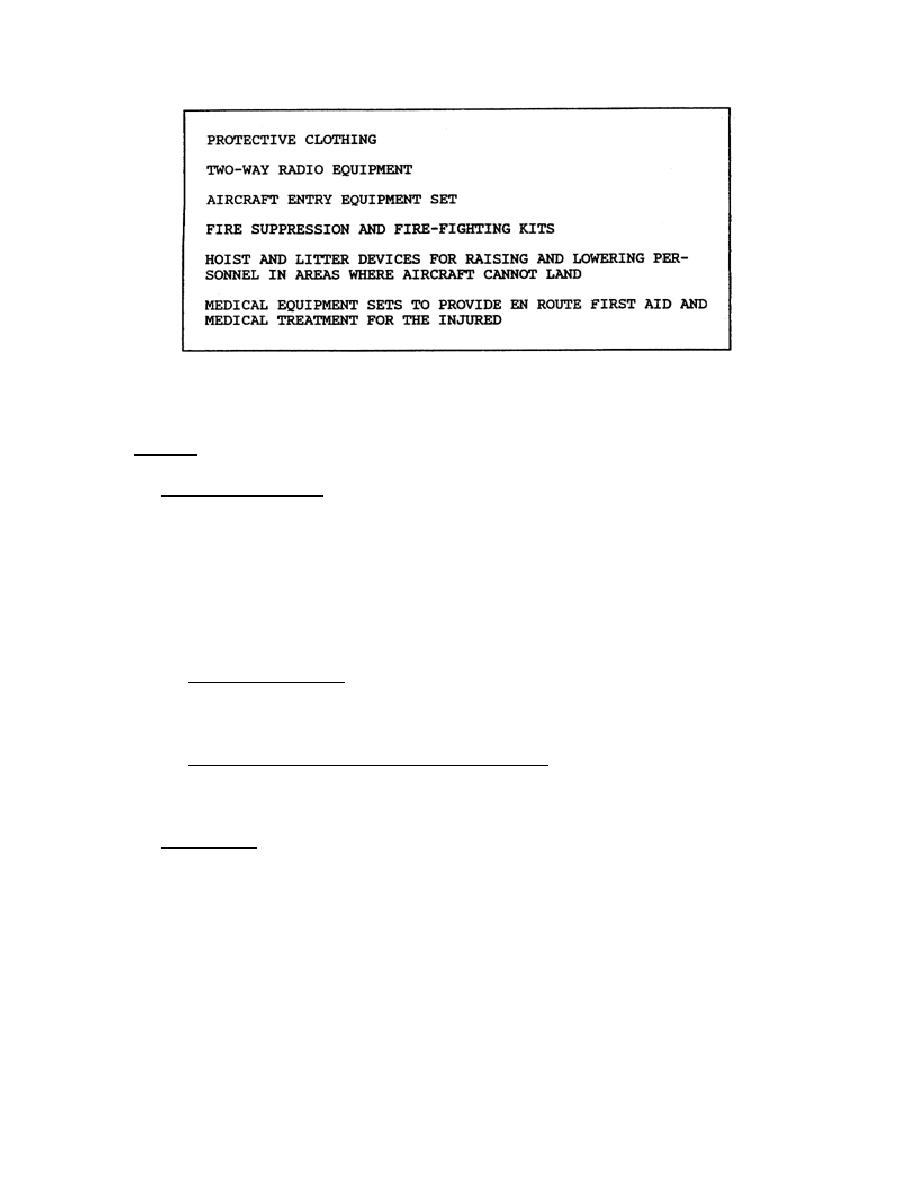
Figure 1-4. Rescue Equipment.
e. Training.
(1) Training requirements. Aircraft mishaps and emergencies occur suddenly or with minimum
advance warning and may result in fire, serious injury, or death to occupants. Therefore, it is extremely
important that fire fighters and rescue personnel be trained for rapid and efficient action.
Comprehensive and continual training must be provided to fire-fighting and rescue personnel through an
on-the-job training program. Personnel who have not completed the basic training program will not be
assigned to responsible positions on rescue teams but may accompany teams on emergency calls.
Supervisors will assign less hazardous duties to untrained personnel and will not permit them to perform
acts that may jeopardize their lives or the lives of fellow team members and accident victims.
(a) Fire truck personnel. Normally, fire trucks will be manned by qualified civilian
personnel. When military personnel are required to serve as full-time fire fighters, only those with the
qualifying MOS will be assigned to rescue and fire-fighting units.
(b) Rescue aircraft and ground ambulance personnel. Personnel assigned to rescue aircraft
and ground ambulances will be trained in fire suppression, removal of victims from aircraft, medical
first aid, and evacuation.
(2) Training aids.
(a) Training manuals, training films, and other published materials may be used as the basis
for training
11
AV0695



 Previous Page
Previous Page
